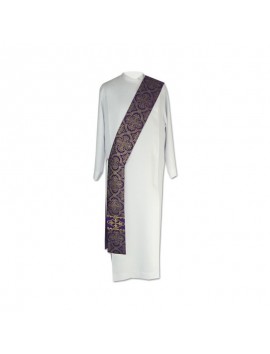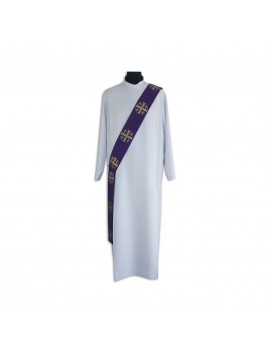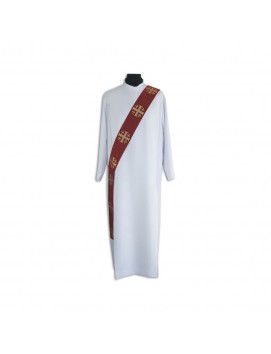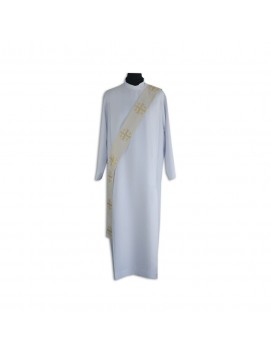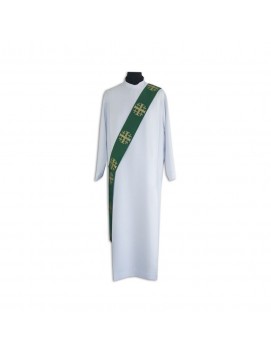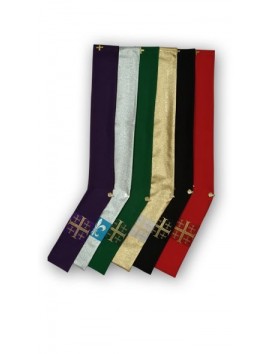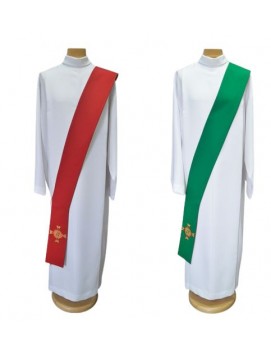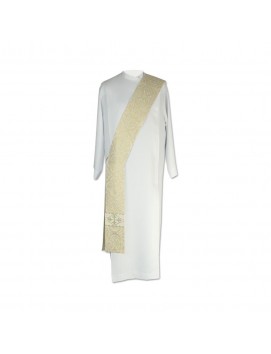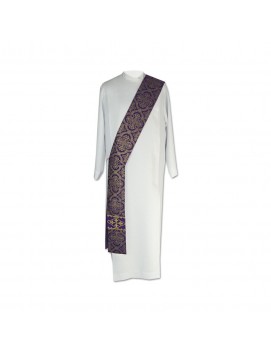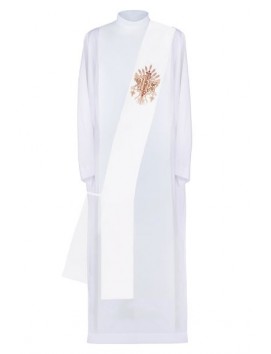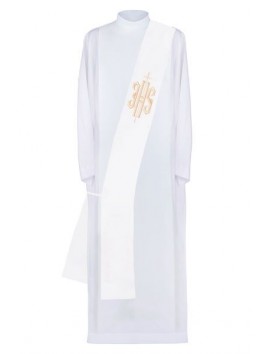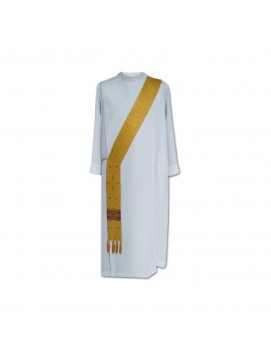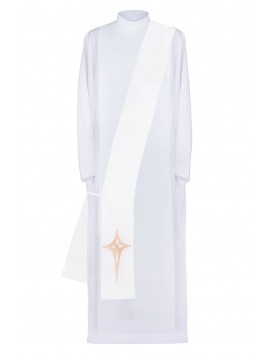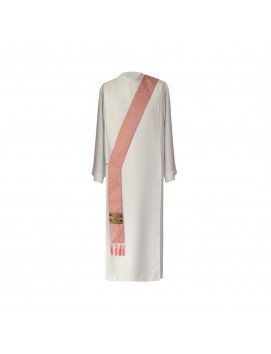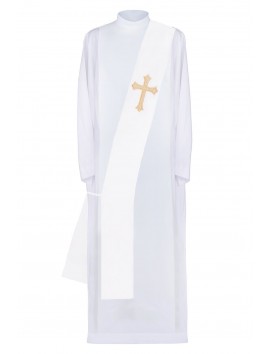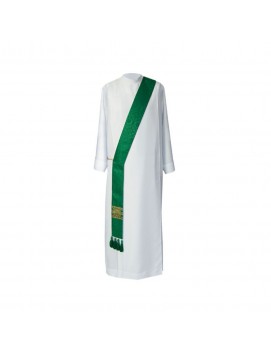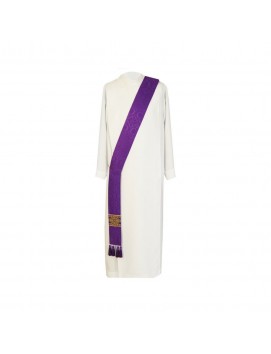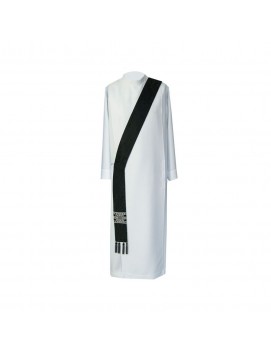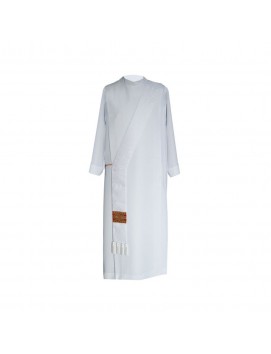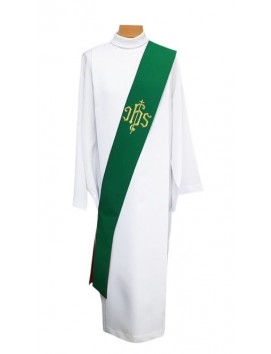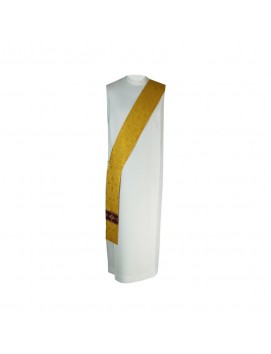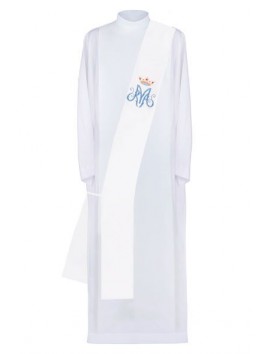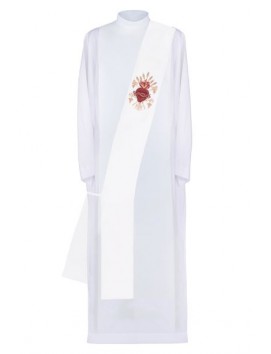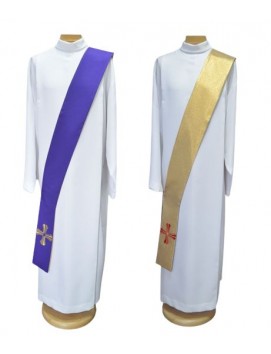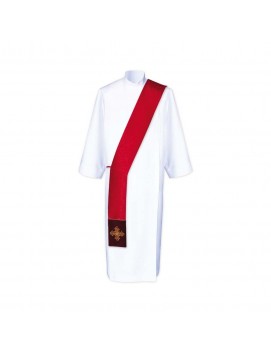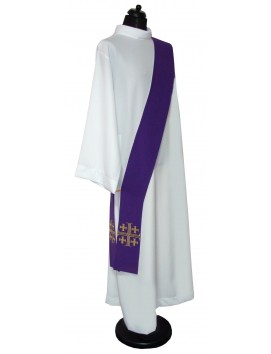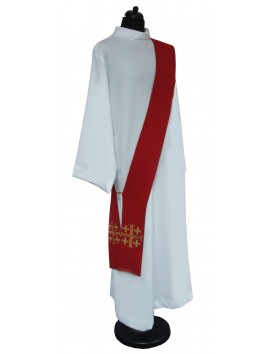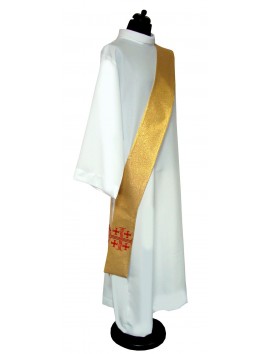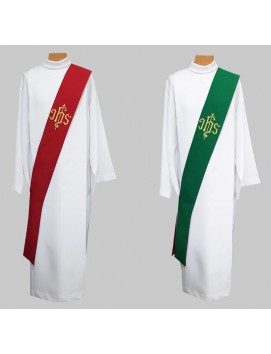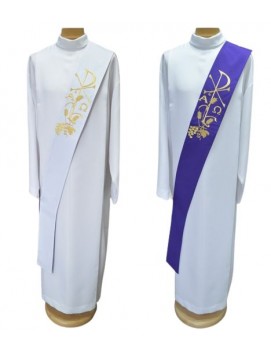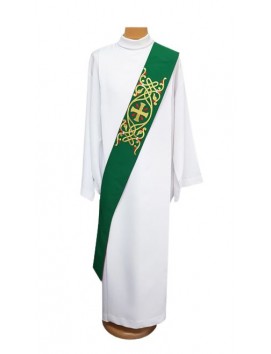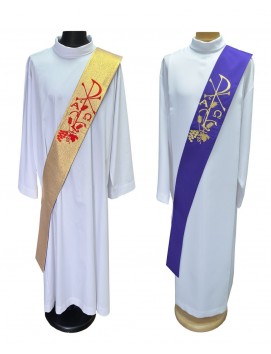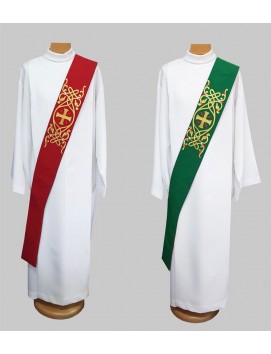No products
Deacon stole
A deacon stole is a type of vestment worn by deacons in various Christian denominations, including Roman Catholic, Anglican, Lutheran, Methodist, Presbyterian, United Church of Christ, Christian Church (Disciples of Christ), and other denominations. The stole is a long band of silk, 2 to 4 inches wide and about 8 feet long, worn around the neck with the ends hanging down in front. Deacon stoles are similar to priest stoles, but they are often simpler in design and may have different colors or symbols to indicate the deacon's role in the church. Deacon stoles can be plain or decorated with spiritual motifs, such as the Crown and Marian Symbol. They are often handcrafted in the USA or Italy and made of wrinkle-resistant, lightweight fabric. Deacon stoles are available in various sizes and can also be made to custom measurements for an additional fee.
A deacon stole is a type of vestment worn by deacons in various Christian denominations, including Roman Catholic, Anglican, Lutheran, Methodist, Presbyterian, United Church of Christ, Christian Church (Disciples of Christ), and other denominations. The stole is a long band of silk, 2 to 4 inches wide and about 8 feet long, worn around the neck with the ends hanging down in front. Deacon stoles are similar to priest stoles, but they are often simpler in design and may have different colors or symbols to indicate the deacon's role in the church. Deacon stoles can be plain or decorated with spiritual motifs, such as the Crown and Marian Symbol. They are often handcrafted in the USA or Italy and made of wrinkle-resistant, lightweight fabric. Deacon stoles are available in various sizes and can also be made to custom measurements for an additional fee.
Understanding the Deacon Stole
The deacon stole is a distinctive and significant liturgical vestment in various Christian denominations, symbolizing the office and service of a deacon. It is a visible sign of the deacon's role, particularly during sacramental and liturgical functions.
The Significance of the Deacon Stole
Worn over the left shoulder and fastened on the right side, the deacon stole is not merely a piece of fabric but a representation of the deacon's commitment to serving the church and its congregation. It is a mark of the diaconal order, conferred during the ordination ceremony, and signifies the deacon's authority to perform certain church rites.
Variations and Usage
The deacon stole is used across various rites and traditions. In the Roman Catholic Church, it is a symbol of immortality and is worn during the celebration of the sacraments and sacramentals. The Eastern Orthodox and Oriental Orthodox Churches have their own versions, such as the orarion and epitrachelion, which serve similar symbolic purposes.
Design and Ornamentation
Deacon stoles come in a range of designs, from simple and plain to ornate with embroidery and religious symbols. They are available in all liturgical colors to match the liturgical calendar, with specific colors worn for different seasons and occasions. The stole may also feature crosses or other symbols that signify Christ's sacrifice and service.
FAQs About the Deacon Stole
Why is the deacon stole worn over the left shoulder?
The deacon stole is worn over the left shoulder to keep the right hand free for liturgical service, a practice with roots in the early church.
Can the deacon stole be worn by other clergy?
The deacon stole is specific to the diaconal order. Its wrongful use by those not ordained as deacons would imply the usurpation of a higher order.
Are there different styles of deacon stoles?
Yes, deacon stoles vary in style, color, and ornamentation, reflecting the diversity of Christian traditions and the liturgical calendar.
What does the deacon stole symbolize?
The deacon stole symbolizes the deacon's role as a servant and minister within the church, reflecting the service and humility exemplified by Jesus Christ.
In conclusion, the deacon stole is a vestment steeped in history and symbolism, representing the deacon's ordained role in the Christian church. It is a reminder of the call to service and the responsibility that comes with the diaconal office.

